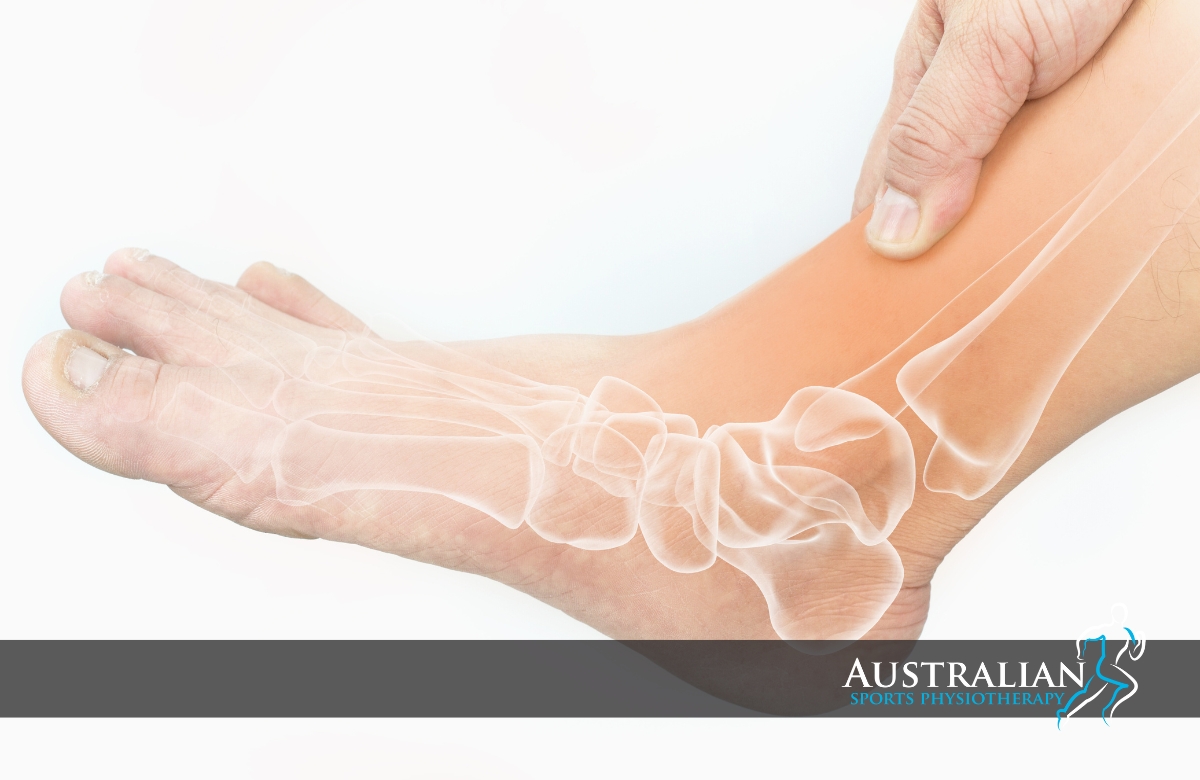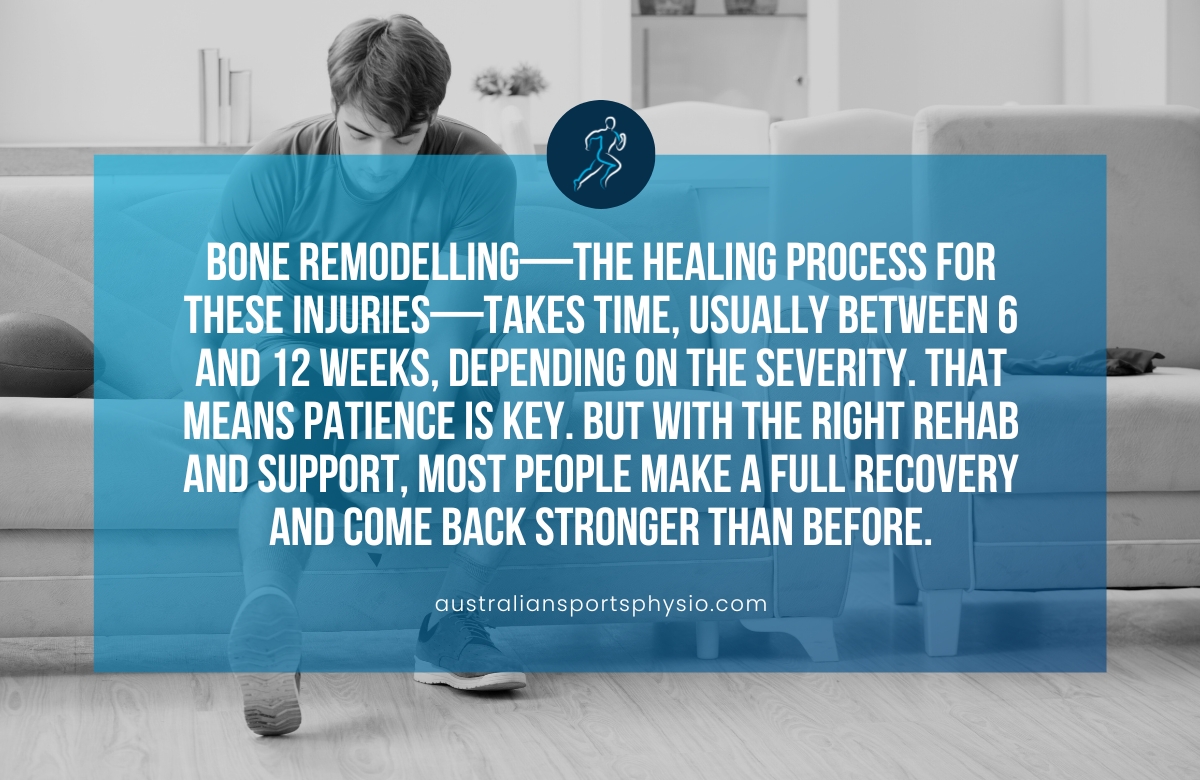At first, it may feel like a dull ache after a run or a twinge during your usual workout routine.
You brush it off—maybe it’s just sore muscles, right?
But over time, the pain doesn’t go away. It gets worse. What started as a mild discomfort now makes every step feel like a struggle.
If this sounds familiar, you might be dealing with a bone stress injury—something many athletes and active individuals face without even realising it.
These injuries often develop slowly and silently, but if left untreated, they can sideline you for weeks or even months.
The good news? You don’t have to deal with it alone.
Physiotherapy offers a proactive and powerful path to healing, helping you not only recover but come back stronger than before.
What is a bone stress injury?
Bone stress injury (BSI) occurs when a bone is repeatedly placed under load (like from running or jumping) and doesn’t have enough time to rest and repair. Instead of one big injury like a broken bone from a fall, BSIs build up gradually from microdamage—tiny cracks in the bone that develop over time due to overuse.
Think of your bones like a construction site—they’re constantly breaking down and rebuilding in response to stress. This natural process is called bone remodelling. When the stress is balanced with enough rest and recovery, your bones adapt and become stronger. But if you don’t allow enough time between activities (or increase your training too quickly), your bones may not keep up—and that’s when problems start.
Over time, this can lead to:
- Stress reactions (early warning signs of injury with bone swelling)
- Stress fractures (tiny cracks in the bone)
- And eventually, full fractures if left untreated
Common causes of bone stress injuries
BSIs usually come down to one thing: too much load, too soon, without enough recovery.
This can happen if you:
- Increase your training volume or intensity quickly.
- Have a history of previous injuries.
- Aren’t getting enough calories or nutrients (especially calcium and vitamin D).
- Have biomechanical issues (like poor running technique or weak muscles).
- Train on hard surfaces without the right footwear.
Physiotherapy treatment for bone stress injuries
1. Accurate diagnosis and assessment
A physiotherapist will perform a thorough assessment, including a detailed history and physical examination, to identify the source of your pain and potential contributing factors. We can distinguish between BSIs and other musculoskeletal injuries, ensuring you get the right treatment.
2. Pain management and unloading
Initially, the focus is on reducing pain and inflammation. This often involves a period of relative rest, which may include modifying activities or using crutches in more severe cases. The physiotherapist will guide you on how to unload the injured bone without losing all your fitness.
3. Biomechanical analysis and correction
A physiotherapist can analyse your movement patterns, such as your running gait or jumping technique, to identify and correct biomechanical faults that may be contributing to the stress on your bones. They can prescribe specific exercises to improve muscle strength, flexibility, and control, which can help to distribute forces more evenly across the body.
4. Strengthening and conditioning
As your bone heals, a physiotherapist will guide you through a progressive strengthening program. This is critical for two reasons:
- Load management: Stronger muscles act as shock absorbers, reducing the stress on your bones.
- Building bone resilience: Controlled, progressive loading is essential for stimulating bone adaptation and making the bone stronger and more resilient to future stress.
5. Gradual return to sport
The most critical phase of BSI rehabilitation is the return-to-sport program. A physiotherapist will create a carefully monitored, step-by-step plan that gradually reintroduces load and intensity. This prevents a recurrence of the injury and ensures you are fully prepared for the demands of your sport.
6. Education and injury prevention
Finally, your physiotherapist will provide valuable education on how to prevent future BSIs. This may include advice on:
- Training principles: The importance of progressive overload, periodisation, and adequate rest.
- Nutrition: Guidance on ensuring you have adequate calcium, vitamin D, and overall energy intake.
- Footwear: Recommendations on appropriate footwear for your sport and foot type.
- Monitoring symptoms: Teaching you to recognise the early signs of a BSI so you can intervene before it becomes a more serious problem.
How long does it take for a bone stress reaction to heal?
Bone remodelling—the healing process for these injuries—takes time, usually between 6 and 12 weeks, depending on the severity. That means patience is key. But with the right rehab and support, most people make a full recovery and come back stronger than before.
Bottom line: If you’re experiencing bone pain that gets worse with activity and better with rest, don’t ignore it. It may be your body’s way of saying it needs a break. Physiotherapists are here to help you recover safely, reduce pain, and get you back to doing what you love—stronger and smarter.

Final thoughts
Physiotherapy plays a crucial role in both the treatment and prevention of BSIs. A physiotherapist can provide a comprehensive, individualised plan to help you recover and return to your sport safely.
Book an appointment with one of our experienced physiologists today for a comprehensive assessment and customised treatment plan.
References
-
Brukner, P., & Khan, K. (2017). Clinical Sports Medicine (5th ed.).
-
Warden, S. J., Davis, I. S., & Fredericson, M. (2014). Management and prevention of bone stress injuries in long-distance runners. Journal of Orthopaedic & Sports Physical Therapy.
-
Jonesco, M. (2014). Bone stress injuries: Diagnosis and treatment. Current Sports Medicine Reports.
-
Tandom, S. (2020). Bone Healing and Remodelling.









